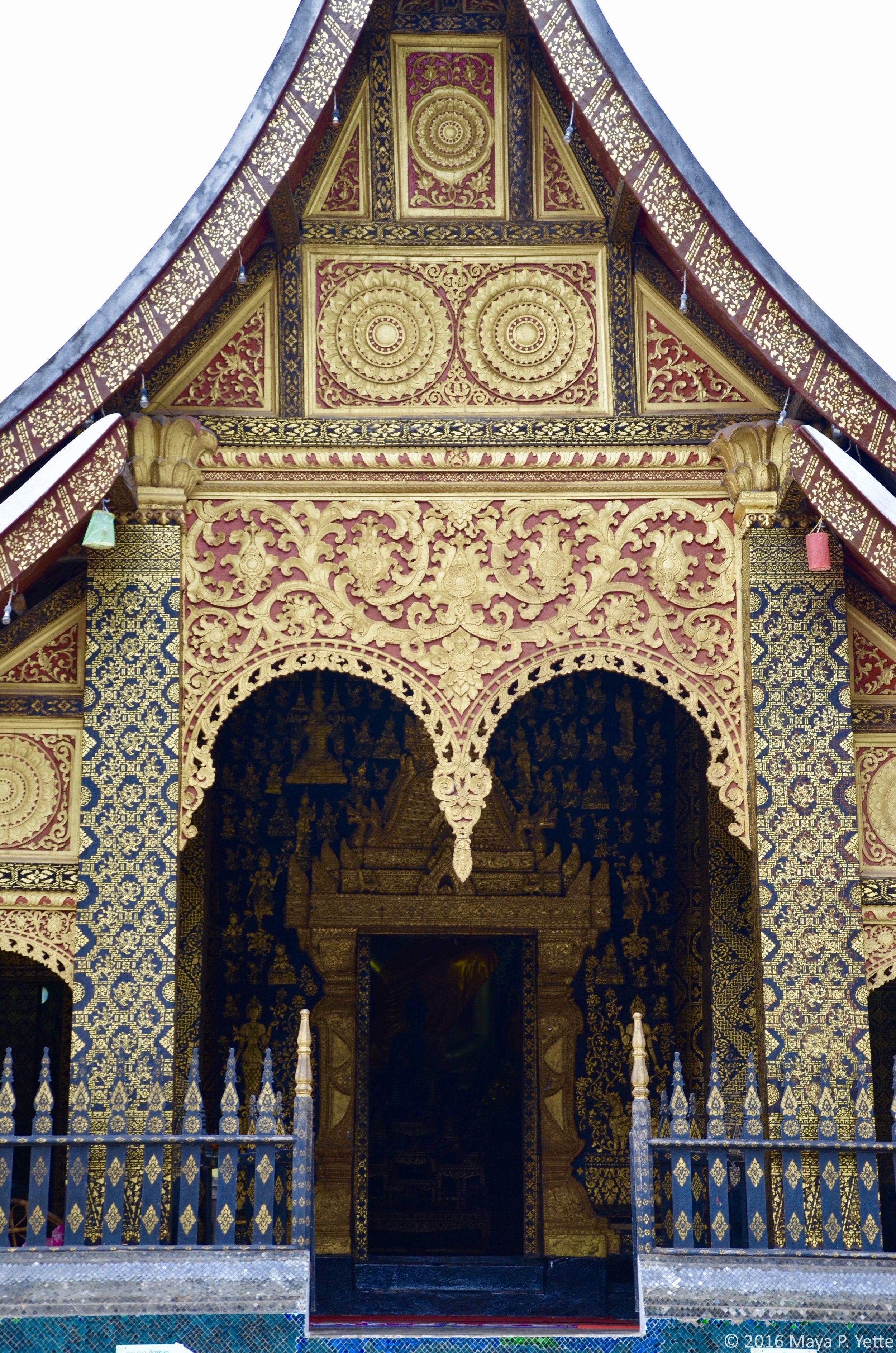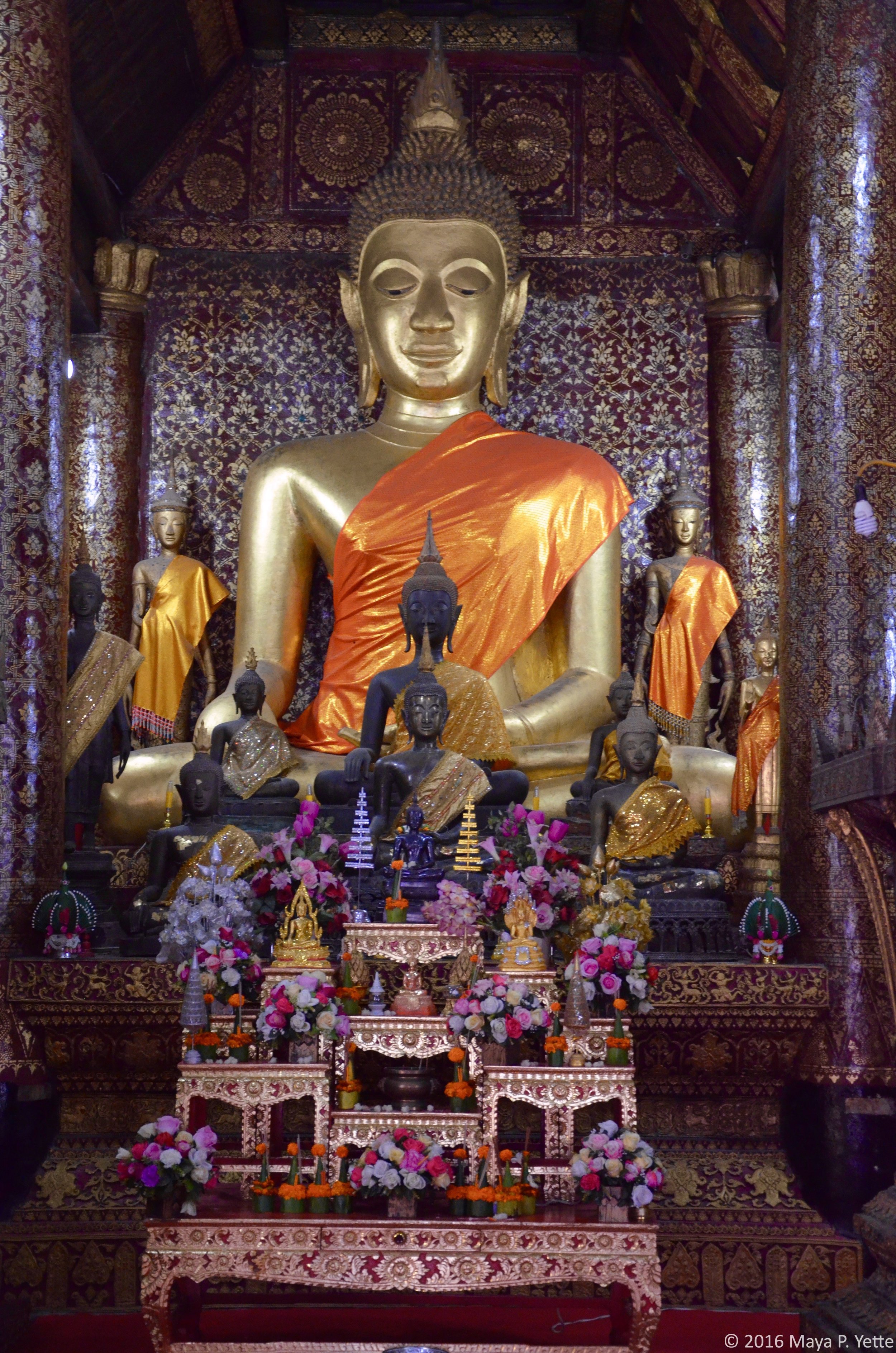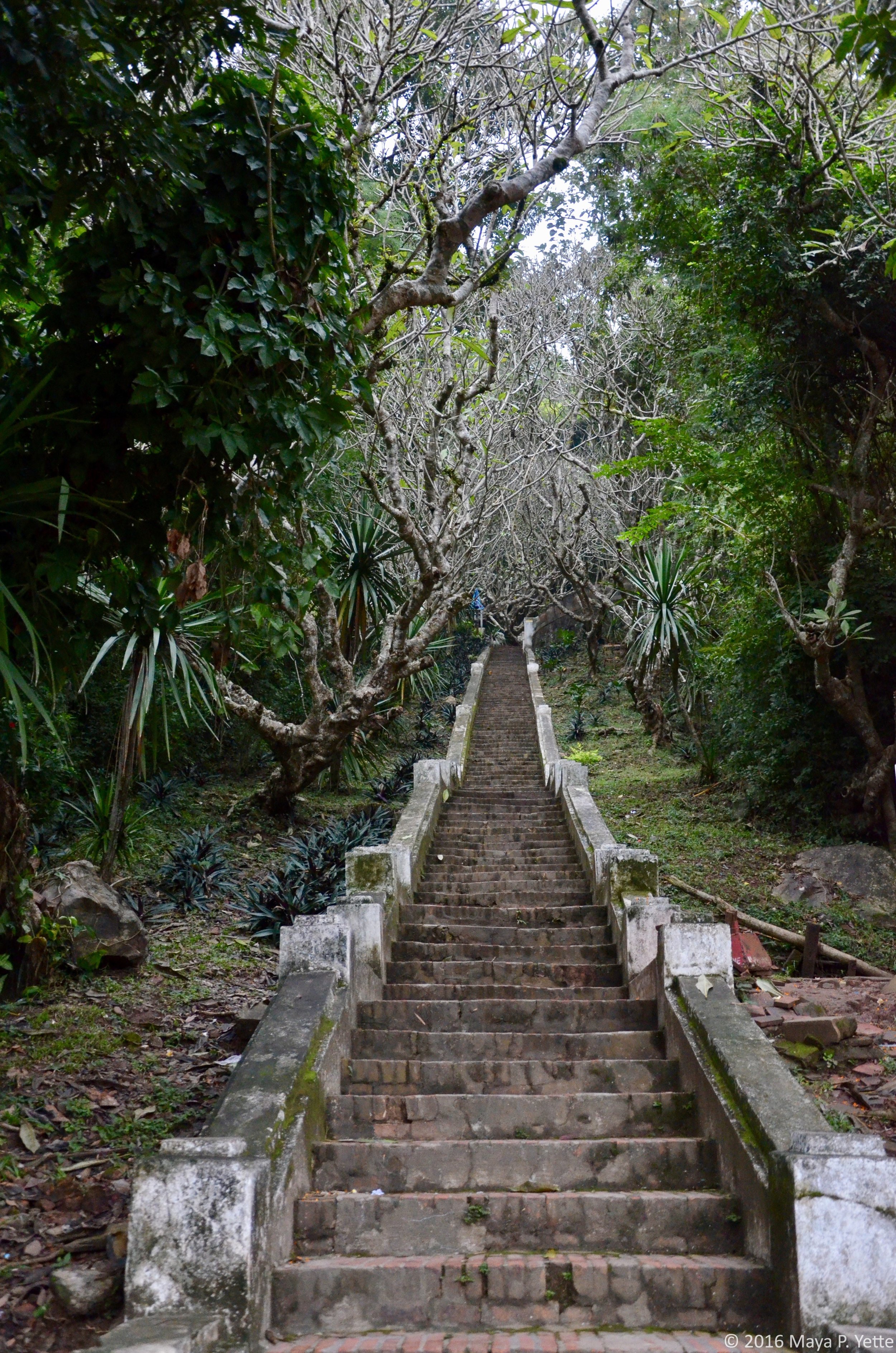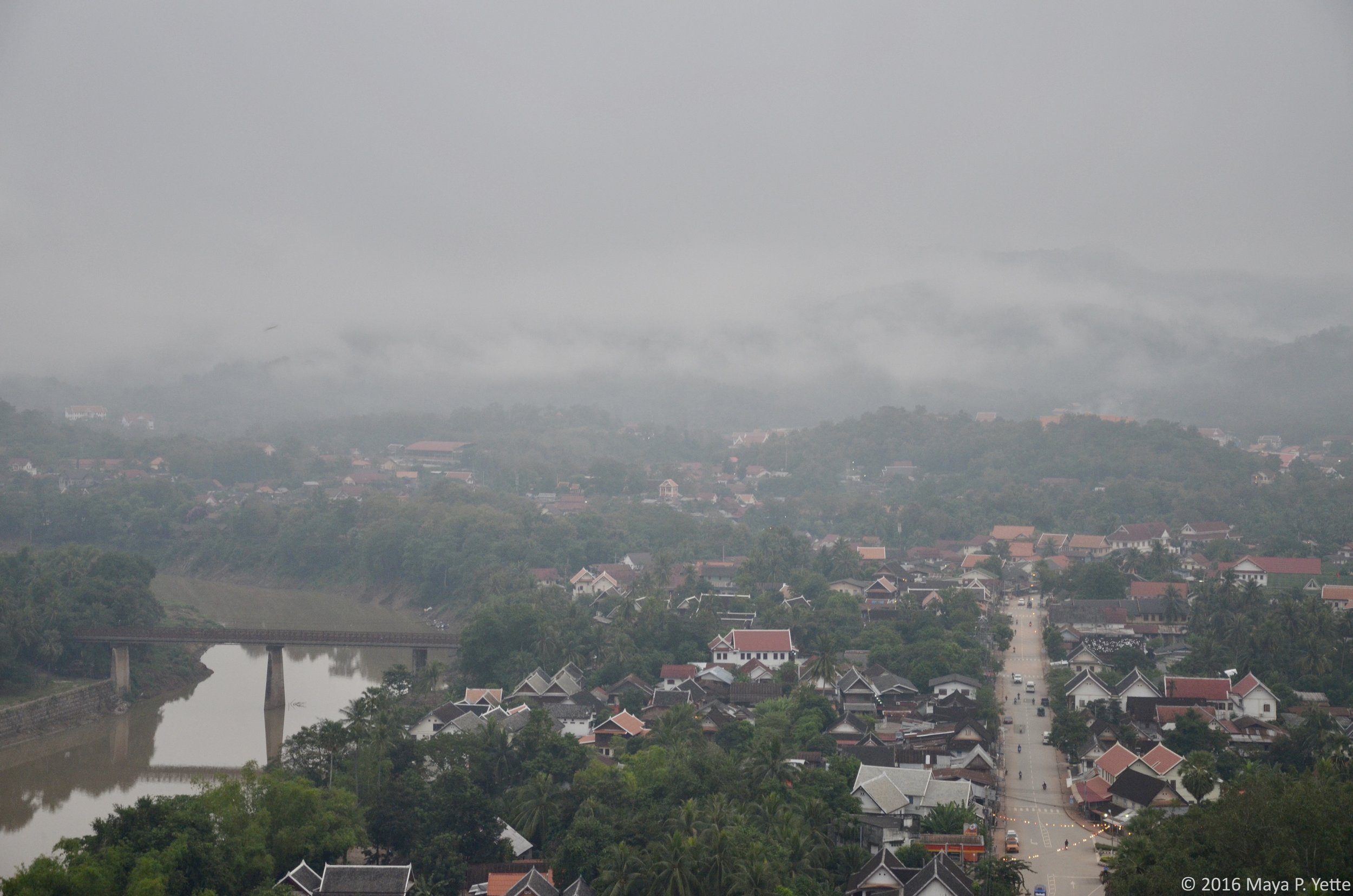I arrived in Luang Prabang, Laos on Election Day 2016, so I don’t need to tell you what kind of mood I was in. My sister, Laila, and I met in Bangkok and we flew to Laos together; it was the first time in my life I truly understood the meaning of “bittersweet”– I was so happy and excited to see Laila for the first time in five months, but also depressed and anxious about the future of our country. Despite that, and the fact that the gray and rainy weather seemed to match our mood, Luang Prabang is truly a gem along the Mekong.
Visiting Laos had been on my list of places to visit (what country isn’t, really?) since I first traveled to Southeast Asia in 2012, but I didn’t have time to squeeze it into my itinerary then. Luang Prabang is a UNESCO World Heritage City, and deservedly so. It is quiet and moves at a relaxing, slow pace. The old town is pretty small and it’s easy to walk its entirety in a day or bike through its charming streets a few times. Over the course of a few days, we walked around, stopping to visit many of the temples (aka wats) and shops in town.
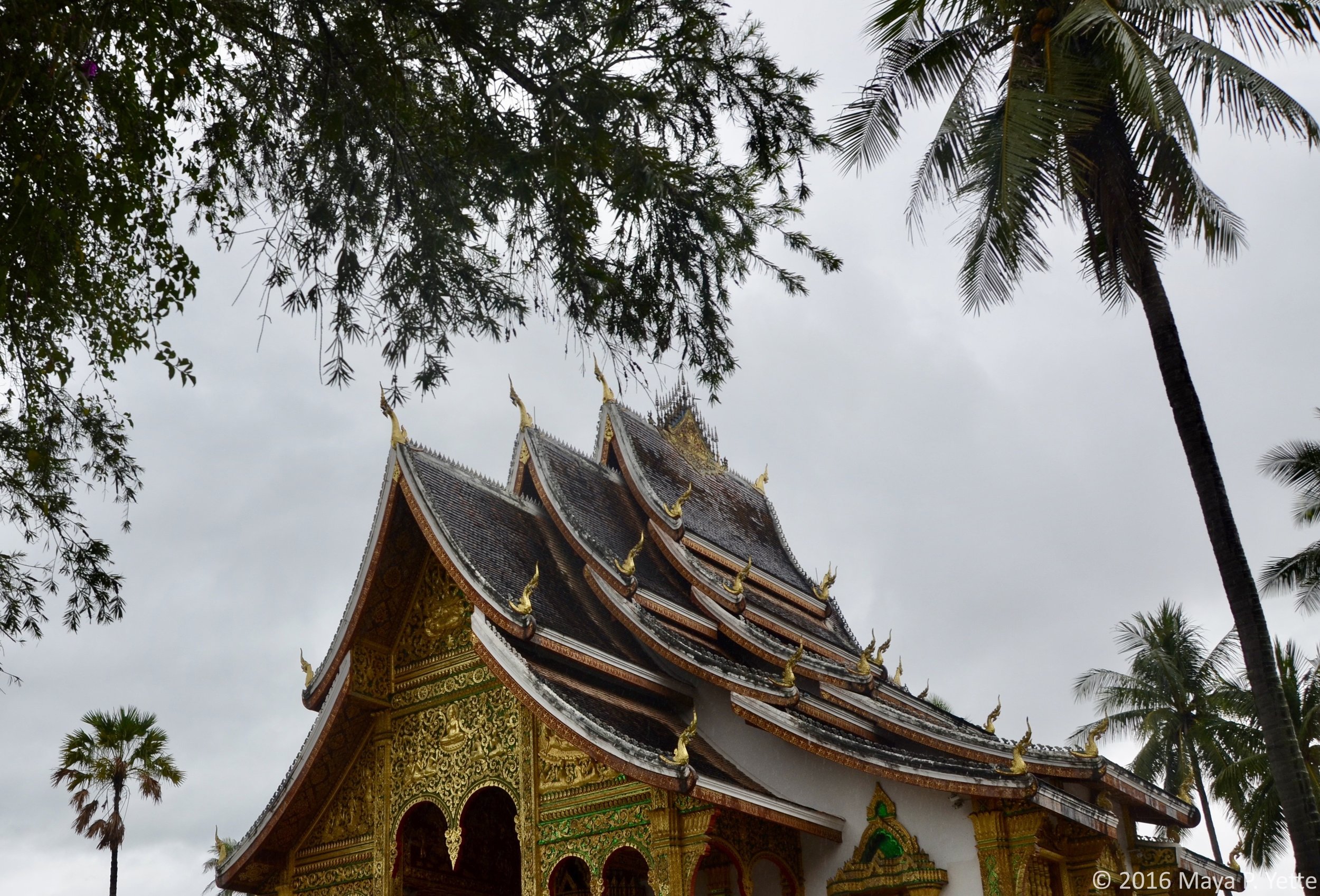
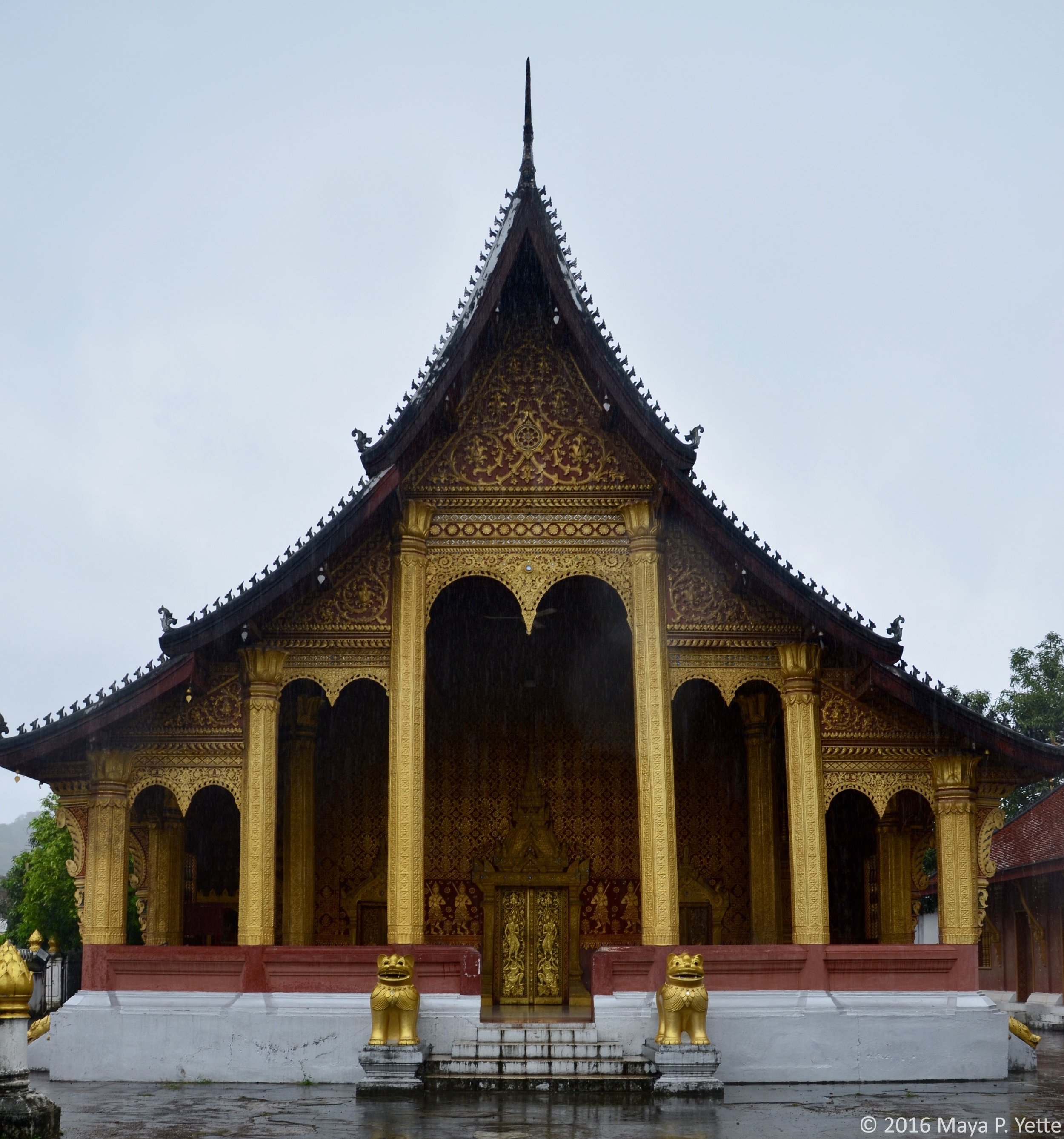
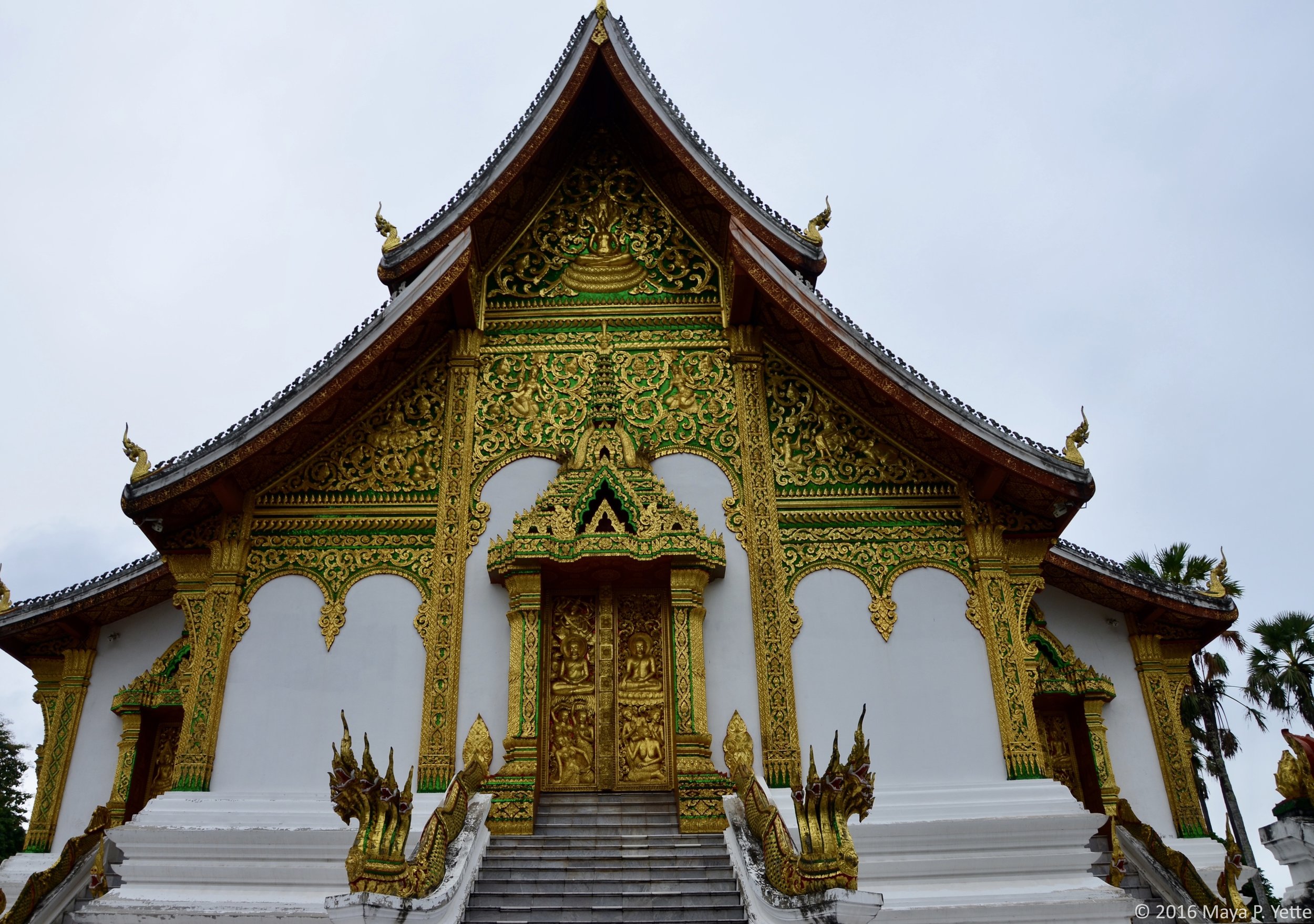
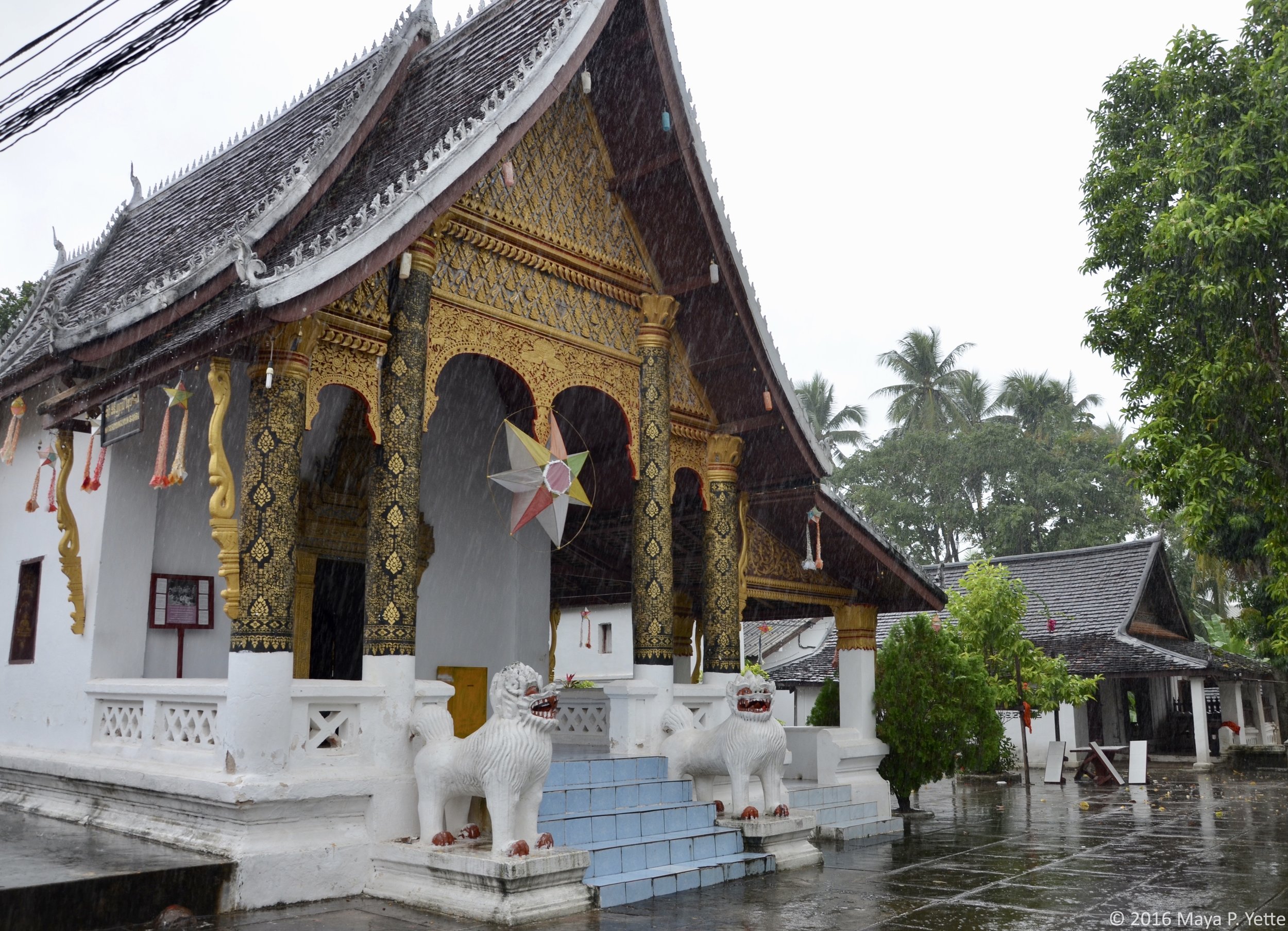
The detail on the temples is incredible, with intricate gold paintings, beautiful wooden doors, sculptures and numerous Buddha statues.
We weren’t in a rush to see anything and because part of Luang Prabang’s charm is just to enjoy the slower pace, we relaxed at the hippy Oasis Restaurant right on the Mekong River and watched the fishermen floating by below.
Eating well and trying local dishes, particularly in Southeast Asia, was one of the predominant themes of my year traveling, so naturally, much of our visit to Luang Prabang centered on food. My favorite restaurants were Tamarind followed by 3 Nagas and L’Elephant. After dinner, it gets dark pretty early and most places are shut down by 11 pm, so Luang Prabang is a perfect place to recharge and get some rest.
Early to bed, early to rise is certainly true, as many people are up before sunrise to take part in the traditional alms giving ceremony that Luang Prabang has become known for. Every morning, hundreds of Buddhist monks clad in their saffron robes file silently out of the many temples throughout town and walk the quiet streets with their “begging bowls” collecting alms. Locals (and more recently, tourists) provide alms, or gifts, in the form of food, mainly sticky rice, which will be the monk’s food for the day.
We got up on our last day to observe the alms giving ceremony, which was a beautiful ritual that dates back to the 14th Century; in Buddhist culture, those who give alms to the monks believe that these good deeds will help them come back in their next life as a higher life form and also help them on their path to enlightenment. After watching the alms giving ceremony, we climbed a few hundred steps up Mount Phousi to reflect and catch one last view of the town and the muddy Mekong River spread out below as the sun began to burn off the morning fog.



